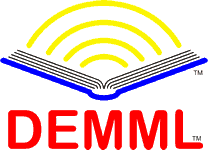Writing-instruction software is designed to analyze the text of an essay and either give it a simple grade or feedback as to what could be improved. Some find it indispensable for improving the skills of beginning writers while others are skeptical as to its efficacy. The primary benefit seems to be the speed with which results can be returned. When students are able to get feedback within seconds and try again right away, it can drastically improve their skills.
There are three major commercial providers of writing-instruction software: Vantage Learning, Educational Testing Service (the producers of the GRE exam), and Pearson Education who charges $30 per student per year. My first impulse is to grate against a commercial service making a profit on teaching children to write. However, I have often paid far more than $30 for a book that taught me almost nothing about a subject. So, if more students are learning to write and gaining the confidence in their ability to learn that comes from that, then I say $30 is well worth it. Although I did find it disheartening to learn that my chances of getting into graduate school may be affected by a computer program.
One factor that limits the usefulness of these programs is that they need to be trained on about 100 human-graded essays before they can be used. This means that these programs could not be used for the unique, context-specific types of essays that most teachers assign for classes. However, those essays are usually used to asses a student's knowledge of the material taught in the classroom, not teach them to write. If the student has learned to write better by practicing using standardized essays and computerized feedback, then they will be more confident and able to focus on the question at hand rather than being hampered by inadequate writing ability.
Some naysayers complain that the software can't measure certain things such as accuracy or clever writing. However, I believe that it is at least a start. No one is recommending that humans be taken completely out of the picture. But the software can be used to quickly and easily bring students up by several levels where the teacher can then take over and start working on the finer points.
I do have one real concern that wasn't addressed in the article: Have the commercial providers patented all of the technology to such a point that it would be impossible for an open-source project to be able to do something similar. This is important because, even though I think $30 is a fair price to pay to learn how to write, it is still a bit too expensive for most of the people in the world. While the commercial programs may have certain special features that many would be willing to pay for, it would be nice if the rest of the world could still have access to the basic algorithms. This would keep the other six billion people in the world from falling even further behind.
Greg Miller. “Computers As Writing Instructors.” Science 2 Jan 2009: 59-60.
This post is Copyright © 2009 by Grant Sheridan Robertson.

No comments:
Post a Comment